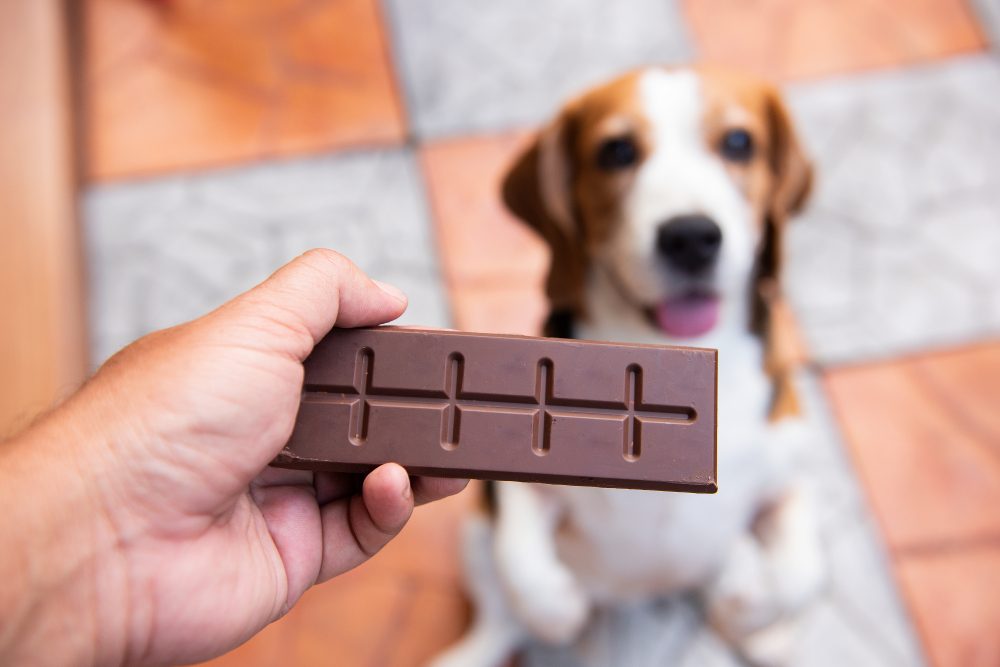
Sweet treats are not good choices for your four-legged friend, and not only because they typically lack nutritional value. Although you can swap out low-calorie substitutes, such as xylitol, for sugar, sweetened foods are best kept away from your pet. Sugar substitutes continue to rise in popularity in foods and many other household products, and cases of xylitol toxicosis in dogs are also growing. Learn about xylitol, and where this popular natural sweetener may be hiding, to protect your pet from poisoning.
What is xylitol?
Xylitol is a sugar alcohol made from the bark of the birch tree that contains fewer calories and carbohydrates than traditional granulated sugar, and has therefore become a popular natural sweetener. Xylitol can be found in sugar-free foods, such as:
- Peanut butter
- Candy
- Chocolate
- Gum
- Baked goods
- Mints
- Condiments
- Drink powder
Xylitol can also be used in non-food products, including:
- Toothpaste
- Mouthwash
- Deodorant
- Shaving cream
- Hair care products
- Chewable vitamins and supplements
- Medication
A product that is labeled sugar-free has a good chance of containing xylitol, so check ingredient labels carefully before bringing the product into your home.

How does xylitol affect pets?
Dogs are the only domestic species affected by xylitol, so cats and most other mammals are safe from this poisoning. When a dog ingests xylitol, their pancreas recognizes the xylitol as real sugar and releases insulin to store the substance. The insulin removes the real sugar from the bloodstream, weakening the dog. Xylitol toxicosis can set in up to 30 minutes after ingestion, causing profound hypoglycemia and, in some cases, severe liver failure.
What are xylitol toxicosis signs in dogs?
Xylitol toxicity can develop up to 30 minutes of ingestion, or 12 to 18 hours later, depending on whether the xylitol was in a slow-release product. Dogs affected by a severe drop in blood sugar can develop:
- Vomiting
- Weakness
- Incoordination
- Depression
- Seizures
If the blood sugar plummets low enough, the dog can slip into a coma.
Some dogs may suffer from liver damage in addition to, or instead of, hypoglycemia, which may not be indicated until 24 to 48 hours later, although blood work changes can often be seen up to 12 hours after xylitol ingestion. A dog who eats a xylitol-containing product and develops liver damage may show the following signs:
- Vomiting
- Diarrhea
- Decreased appetite
- Depression
- Jaundice
How is xylitol toxicosis diagnosed in dogs?
A xylitol toxicity diagnosis is based on clinical signs and a history of eating a xylitol-containing food or product. A blood chemistry panel identifies if the liver has been affected, and also evaluates your pet’s blood sugar concentration, which helps guide our treatment plan.
How is xylitol toxicosis treated?
Immediate treatment—ideally, before your dog begins showing clinical signs—gives the best prognosis. If your dog is not exhibiting toxicity signs, we may induce vomiting to remove as much toxin as possible. However, inducing vomiting may be contraindicated in some patients, depending on how long ago they ingested xylitol and if they are showing any hypoglycemia signs. You should never induce vomiting on your own, unless directed to do so by your veterinarian.
After we admit your dog, we check their blood sugar and liver enzyme values to obtain a baseline starting point. Then, we administer intravenous (IV) dextrose to manage hypoglycemia. We will monitor your pet’s blood glucose concentration regularly to adjust dextrose administration as needed, and we will also evaluate their liver values. Your pet may be hypoglycemic for 24 hours or more, so they may need regular glucose checks and dextrose IV boluses for a few days.
Mild liver damage usually resolves on its own, while severe liver enzyme increases are often fatal. Liver damage treatment is based on the signs your dog develops, and can range from supportive nursing care to blood transfusions.
How can I protect my dog from xylitol toxicosis?
Xylitol ingestion can be deadly for your dog, so use the following methods to protect your furry pal from toxicity:
- Read the ingredient list — Check the ingredient list of any product that is labeled sugar-free to ensure that xylitol does not replace sugar. Buzzwords like “reduced sugar” or “no sugar added” also commonly indicate that a sugar alternative was used, so search for xylitol in the ingredient list.
- Keep sugar-free foods and products out of your pet’s reach — If you stash sugar-free gum, mints, or candy in your purse or jacket, hang those articles out of your pet’s reach, and ask visiting guests to do the same. Safely store any xylitol-containing medications, cosmetics, or toiletries in a cabinet or drawer with a child lock for extra security, or find alternative products that do not contain xylitol.
- Be prepared for emergencies — Save an animal poison control hotline number, so you have immediate access in an emergency, and post the information in a location that all your family members can easily find. Also, map out the route to the closest emergency veterinary hospital to ensure your dog receives prompt treatment, day or night, for the best outcome.
Whether you know, or only suspect, that your pet ingested a toxic substance, contact our Livermore Family Pet Hospital team for help.

